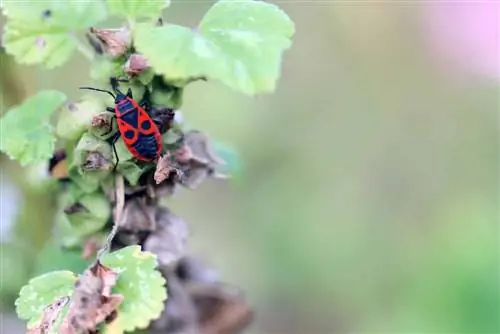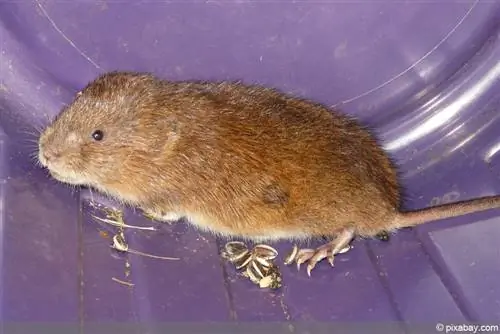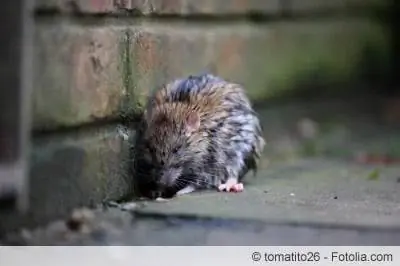- Author admin [email protected].
- Public 2023-12-17 03:39.
- Last modified 2025-01-24 12:45.
If a vole shows up in your own garden, it can quickly become a pest. If there is enough food for them, they will quickly settle down at home. The vegetarian's preferred food includes all bulbous flowers such as tulips and daffodils. But roots or bark of trees, crops and attractive roses are also part of their preferred food. So if a vole has made itself comfortable in the garden, it should be driven away quickly. There are a few ways and means that do not involve poison.
Identifying a vole
If mounds of earth are increasingly forming in the garden, then it could be either the protected mole or a vole. However, voles' mounds differ from molehills in that they have an exit on the side. The pest itself is around 10 to 20 cm long and has black, reddish-brown or brown-gray fur. Light to medium-heavy garden soil is the ideal environment for voles.
The first steps
First of all, after vole mounds have been identified in the garden, they should be examined to see whether they are still inhabited. This can be determined with the help of the so-called scrambling test. Vole grass can be used to locate the underground tunnels. This is lit and produces a strong smoke. According to the trade, the animals are already being driven away. The side effect, however, is that wherever the passages run underground, smoke comes out of the ground. Then proceed as follows:
- Corridors go underground from the hills
- expose this to a length of about 30 cm
- are they still inhabited, fill them up again
- At the same time, a live trap can also be used here
- fill up or destroy the entrance to the hill
- If there is an inhabited hill, the vole will quickly rebuild it
The right time
Of course, voles can be driven away all year round, but the best time to do this is from autumn through winter to spring. During these months the animal finds less food, but it does not hibernate and is still active. During this time, bait is also often accepted and can be laid out. But of course all the measures taken to drive away the voles without using poison can also be taken in the summer months.
Tip:
Everything that is touched for the voles to capture should not have human smell. Therefore, it is advisable to wear rubber gloves when baiting or setting live traps.
Dispel with smell
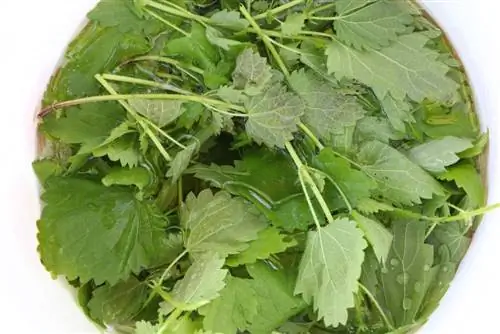
The pests have a very sensitive nose and they even detest some smells. The human smell or the smell of pets such as dogs or cats can drive away voles. And some plants also give off a smell that the small animals don't like at all. Therefore, when expelling by smell, the following procedure should be followed:
- use human and animal hair
- stick these in bunches into the entrance of the hill
- Open the tunnel from above and also fill it with tufts of hair
- leaves or branches of plants also help at the same time
- use spruce, walnut or camphor parts for this
- Manure made from elderberry, nettles or spruce
- pour this mixture directly into the aisles
- Put fish waste in the aisles
- the animals don’t like the smell of beer either
- that's why empty beer bottles placed in the aisles help
Tip:
Some of the smells are also unpleasant for humans. These should therefore not be used near a seat or the house.
Dispel with noise
Voles like to be quiet in their environment. Therefore, a garden with children playing frequently is often not haunted. If there are no children in the family who can make noise, then the garden owner has to take this into his own hands. Stomping in the garden for a longer period of time every day can scare away the small animals. If you don't have the time or desire for this, you can also use other noise sources:
- A mechanical alarm clock is effective
- this is put in a plastic bag in one of the aisles
- Equally effective are several iron rods that are rammed into the ground
- hit here several times a day with a hammer
- As an alternative, retailers offer mole or vole repellents
- these emit high-pitched sounds that hurt the animals' ears
- use according to dealer instructions
Natural enemies
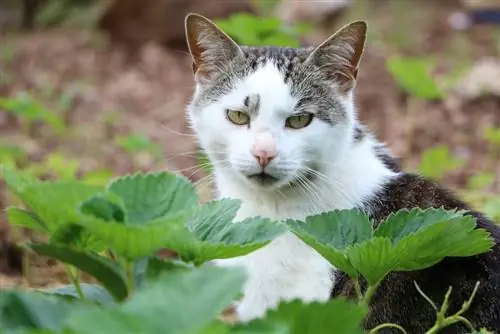
If the voles are causing mischief in a garden in the country, then natural enemies are already present here. Birds of prey tend to circle the sky outside of big cities in search of food. In order to attract these birds to your own garden, it is advisable to offer them a place, for example in the form of a perch. Other natural enemies are:
- Mouseweasel
- Ermine
- Cats
- Building a pile of wood attracts weasels
Tip:
Of course the predators are usually not found in the city. However, if you have a cat as a pet, you should consider letting it out into the garden if there is a vole infestation. Outdoor cats from the neighborhood can also be lured into your own garden with a small daily gift of food.
Insert live trap
The live trap is a good way to catch the little pests and release them far away. In contrast to the displaced voles, which are still nearby and could return, the captured and released animals are once and for all removed from their own garden. But great care must be taken with the live trap so that no human smell clings to it. In such a case, the animals will not come close and the bait will not be able to block them. Therefore, rubber gloves should be worn right from the start. The trap and the bait must not come into contact with your arms or other parts of your body. Otherwise, please note the following when laying out the trap:
- usually it is a pipe
- is available in well-stocked stores
- two of these are placed in one aisle
- at each exit hole at the end of the corridor
- so the mouse, no matter which side it comes from, will definitely fall into the trap
- fill the live trap with carrots, apple pieces or similar beforehand
- despite wearing gloves, rub the trap well with soil
- close the corridor again
- no light is allowed to penetrate
- check after an hour whether the vole has been caught
- if this is the case, put it in a cage
- Release it in the forest as quickly as possible, far away from your own garden
- use sturdy gloves, voles could bite
Tip:
Since moles are not allowed to be caught, but their mounds look very similar to those of voles, live traps are a good option if it is not possible to identify exactly which animal they are. This means that accidentally caught moles can easily be released again.
Prevention through root protection
Prophylactic measures can be taken when designing the garden or creating a new bed and building barriers against pests in the ground. This makes sense, especially if the gardens in your neighborhood are frequently infested with voles. To do this, you should proceed as follows:
- prevent directly when planting vegetables, fruit trees or flowers
- to do this, place wire mesh around the roots
- so the voles can no longer reach and damage them
- For trees, wrap a wire mesh around the trunk near the ground
- Voles also feed on the bark of trees
Tip:
If a wire mesh is to be wrapped around the trunk of the trees near the ground, this can of course be done at any time and not just when new plants are planted. The existing trees can also be protected in this way.
Conclusion
Voles can be driven out of the garden by many things, but in this way there is always the risk that they will just migrate to the neighbor's garden and later appear again in your own garden. However, if they are caught alive and released far away in a forest, this danger no longer exists. And the natural enemies of the small vegetable rodents are also a good choice to protect your own garden from voles in the long term.




